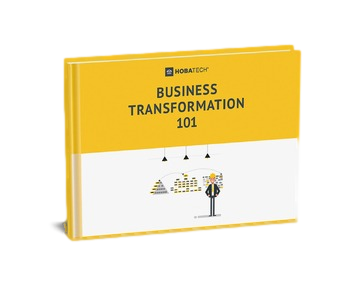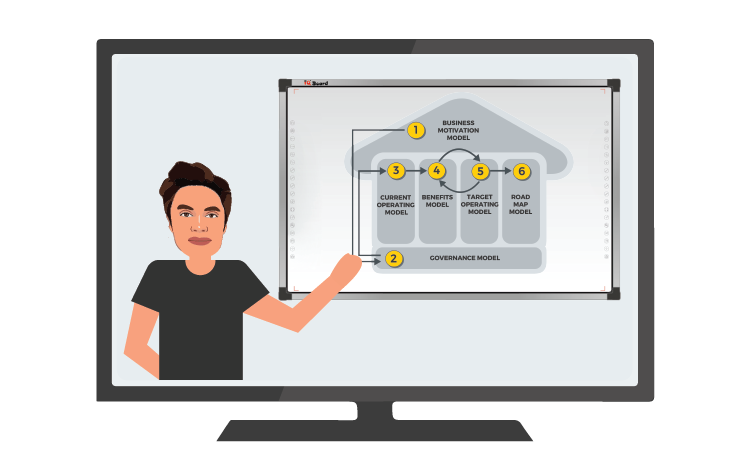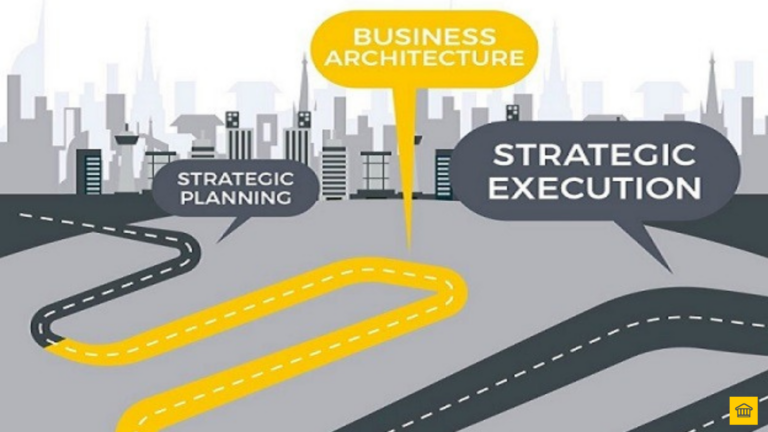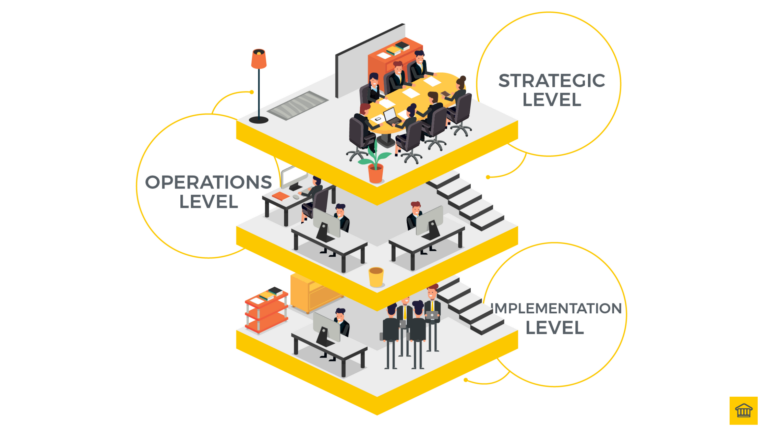As the competition begins to rise, businesses are finding it hard to meet their consumer demands and accomplish their goals. In order to boost efficiency, companies are now heading towards Business Process Automation – BPA in short.
When you notice the term ‘automation’, you mayperceive robots taking over a company. However, BPA has something entirely different to offer. It can literally transform the way you operate by easing the workflow and automating the entire processes involved.
In this post,we will discuss:
- What is BPA?
- What are the advantages and disadvantages?
- What Processes Can BPA Help me With?
- How Does a Company Implement a BPA Solution?
- Why Even Go for BPA
- What Problems can BPA Help Me Address with my Address with my Current Operating Model?
- Where and How Does my Organisation Need to Change to Create its Future Target Operating Model (TOM)?
- Conclusion
This post will guide will take you through the Business Process Automation (BPA) journey and reveal to you how BPA can be a game changer for your business, what are its perks and drawbacks, what processes does it work with, and how you can employ BPA to boost your business.
What is BPA and How Does it Work?
What if I told you that your business could cut around 90% of the operational costs by implementing BPA? Yes, that’s true! but equally – BPA is not a magic wand that you can wave to get instant results. What BPA is, is basically a strategy (and perhaps the best use of technology) that helps businesses automate their day to day processes by (in most cases) streamlining their daily operations.
Whether it is client communications, invoicing, purchase orders or even employee onboarding, Business Process Automation can execute all these tasks seamlessly.
What this does for you and your team is – its frees-up your time to focus on the bigger tasks that require your undivided attention – in short: setting up your path to success.
You may have competitors that have brand new digital infrastructures ready to impress their customers quicker than ever, whereas you lack the technology needed to woo them first. Perhaps your competitors are responding to the customer queries within seconds while you take an entire day to get back to them. And during that split second, your customers would know exactly whom they shouldgo to. This could be disastrous for your business – as you could lose all your current (and potential) clients to those competitors that are able to process (or at least customer inquiries) better and faster.
This is where Business Process Automation comes in handy. Not only does it help you get ahead of your competitors, you could also save plenty of time and money by implementing the system.
The remarkable solution allows you to get things done faster than humanly possible through user defined rules and regulations. You set the rules and the system seamlessly follows with perfection. This way you can ensure the best practices are being used and the results and customer experience is consistent throughout the customer journey with little or no errors or delays.

6-Steps to Business Transformation Success
WHAT THE TOP 30% OF ORGANISATIONS KNOW THAT YOU DON’T 👉

👏 "What if I told you that your business could cut around 90% of the operational costs by implementing BPA? Yes, that’s true! but equally - BPA is not a magic wand that you can wave to get instant results." 🚀💡#BusinessProcessAutomation #BusinessTransfomrattion #RPA
Heath Gascoigne Tweet
What are the Advantages and Disadvantages of BPA?
Advantages
Business Process Automation has incredible pay-offs in terms of the advantages. In fact, business spending in the US on BPA is expected to grow to 12.7 billion dollars by 2021. There is a reason why more and more businesses are turning to BPA to streamline their operations. Here are the top 6 advantages:
1. Boosts Accuracy
Did you know that a manual typing error can cost your business thousands and even millions of dollars? If your business relies heavily on data or recurrent tasks, Business Process Automation can be game changing for you. We started off with accuracy because that’s is exactly how important data is to businesses these days. In fact, companies in the US lose around Trillian dollars 3 per year to bad data.
2. Increases Efficiency
Employees expect to get hired for their special skill sets and end up spending most of their time doing manual paperwork. BPA rectifies this by allowing skilled workers to focus on the tasks that require their special skill sets. For instance, your sales team can use the time spent on updating spreadsheets in closing brand new deals with your prospects – significantly boosting efficiency, productivity and sales.
3. Boosts Visibility and Control
BPA allows you to see where you’re lacking – giving you a microscopic view of everything. You can keep a better track of your teams and deadlines – keeping you informed throughout the process. You can also evaluate whether you’re using the resources at your disposal to their full potential.
4. Faster Turn-Around Times
Better visibility also ensures that you are able to identify a problem or a challenge before it becomes a chaos. For instance, you will know sooner whether or not a critical deadline might be missed. When you know about this in advance, you can allocate more resources to get the project completed on time.
5. Employee satisfaction
When employees don’t have to carry out manual tasks, they get ample time to focus on things they are actually interested in doing (and hired for). This gives them a richer and fulfilling work experience – making them feel more valued and content.
6. Customer satisfaction
BPA benefits your customers, too! Your customers will get immediate responses to their queries and enhanced products/services – improving their overall experience.
Disadvantages
No matter how great – everything has its fair share of drawbacks. Here are some disadvantages you might encounter while opting for BPA:
1. Investment costs
Your business is bound to incur some expenses when incorporating new technology. As they say, change does not come easy (nor free!). However, once you take the leap, you will soon be able to recover all the money invested into the system through streamlined and leaner processes, resulting in less waste, and ultimately better ROI.
2. Employee Fears
Employees will naturally fear that they may lose their jobs. However, businesses that introduce automation have an increased ability to generate more task and jobs, with more complexity, requiring greater skilled staff to deal with them.
3. Loss of flexibility
As a result of BPA, the workflow will become more rigid with little or no room for changes or modifications. Humans (as opposed to machines) are able to quickly adapt to changing situations, but systems (AKA BPA) follow your rules that are often (almost) set in stone. This can be mitigated by setting BPA take over tasks that don’t require a lot ofchanges.

👏 "What if I told you that your business could cut around 90% of the operational costs by implementing BPA? Yes, that’s true! but equally - BPA is not a magic wand that you can wave to get instant results." 🚀💡#BusinessProcessAutomation #BusinessTransfomrattion #RPA
Heath Gascoigne Tweet
What Processes Can BPA Help me With?
Business process automation transforms the way you operate, but not all processes are suitable. Here’s a summary of typical types of processes:
- High volume, low complexity – task that if automated are of a certain volume and Standardisation that the payback period and/or return on investment (ROI) would be justified by the time, money and effort spent to develop and implement a BPA solution;
- Rote and repetitive tasks – these are typical manual administration task with little or no decision making required by the staff member;
- Self Service Portal tasks – User initiated tasks and activities that don't require a Staff member to assist or approve just step in during exceptional or escalated cases, and
- Back Office Tasks – these include after hour and overnight batching, processing and reporting activities that happen overnight, behind closed doors when everyone is sleeping (and no one is watching), to name but a few.
As an example, here’s a list of the most common activities and actual processes BPA can help you with:
- File Sharing
- Report Generation
- Order Entries
- Claims Processing
- Spreadsheet maintenance
- Application Integration
- Cloud and Browser Automation
- Batch Processing
- Logging Entries
- ERP integration
- Automated Approvals
- Data Encryption
- Employee onboarding
How Does a Company Implement a BPA Solution?
Now that you are aware of how BPA works, you must be wondering how it can be implemented into your business.
The best way to do is to start by following the 6-step agile business transformation framework.
This framework follows 6 crucial steps or models that are not just crucial for business transformation but for automation as well, as these helps businesses navigate through their current operating model and procedures, and move towards creating a more powerful and impactful TOM.
The step by step procedure also helps answer all the 5 strategic questions asked of your business:
- Why – why do it (AKA what’s in it for me? I.e. Vision)
- Who – who’s involved in this transformation, what are their decision making powers and process to follow?
- What – what is the problem (and opportunity) you are trying to address with your current operating model?;
- Where & How - are the changes (e.g. people, process and technology i.e. BPA) needed to address the problems and opportunities with the organisation today? and
- When– will these changes be implemented (and the business benefits from the transformation) be realised?
The ground breaking process entails agreeing and implementing the following:
- Business Motivation Model – agree the Vision and setting the overall direction for the organisation
- Governance Model –agree the decisions needed and by whom
- Current Operating Model – identify the flaws in the current model
- Benefits Model – identify the benefits the business can reap
- Target Operating Model – Establishing how the goals will be realized
- Road Map Model – agreeing how the system will be implemented to actualize the TOM
Why Even Go for BPA?
The answer is simple: killing two birds with one stone. This transformation can help businesses significantly cut down on their costs while also boosting efficiency and benefitting the employees in the process. For instance,Confluent, a field service company, was successfully able to go from 50 to 150 workers without adding more back-end workers by automating the manual business processes.
Who is Involved and What is their Role in the Design and Business Process Decisions?
The shift to BPA is an organisational effort. From the Customer, Operations to Senior Management Team (SMT) stakeholders, everyone will be involved in the automation. All impacted stakeholders need be able to have a transparent view of the work at each step – reviewing all the processes, identifying the candidates for BPA focusing on the candidate processes.
What Problems can BPA Help me Address with my Current Operating Model?
Rectifying data errors
With a large volume of data and time limitations, data errors are bound to happen. Human errors can be made while typing in data or sharing files and the costs of rectifying these errors can be quite high. BPA on the other hand can take over the manual data entry tasks – delivering faster results that are accurate and error free.
Northrop Grumman’s Electronic System Company was able to significantly reduce data errors by introducing automation to centralize the approvals process – allowing the senior managers to see where their data was flawed.
Streamlining tasks and the workflow
Most businesses have complex operations with multiple applications. When going digital and expanding, your business will be adopting lots of new technologies – making it harder to keep track of things. BPA can help you manage all these applications seamlessly through point to point integration – whether you have legacy systems or cloud based systems.
Mapping out the user journey and identifying process flaws
Ruling out the hurdles and bottles necks in your current processes or model when trying to boost organisational efficiency is not a piece of cake. Businesses actually need to zone in and have a microscopic view of all the activities being carried out by their teams and the users. They need to map out the customer journey step by step to rule out the problematic areas. If, however, you have a BPA process in place, you can go over each step and identify the flaws in your business – making it much easier for you to recover. In a manual environment, that is literally impossible to do.
Addressing common compliance issues
Business compliance issues can put a strain on the company’s resources and expenditures. To avoid that, BPA encrypts data at all levels and streamlines the flow of information to auditors in order to help businesses stay compliant.
Faster Approvals
Waiting for approvals from the higher management can throw everyone off schedule. BPA ensures fast and hassle free approvals through powerful software integrations.
Why is BPA the Way to Go?
Business automation empowers companies to optimize the use of internal resources, get the most out of their digital transformation and opportunity costs, and enable the expansion of their operations all the while providing their customers with an enhanced and consistent user experience. In simple terms, through automation, businesses are either generating or saving money.
Where and How Does my Organisation Need to Change to Create its Future Target Operating Model (TOM)?
In order to revamp your TOM to accommodate automation, you need to address a few change management issues. You need to decide who will own the BPA tools and will be responsible for the overviewing of all the processes – that is the stakeholders and supervisors. You need to then communicate with your employees clearly defining their roles and explaining to them how this process can in fact be beneficial for them (removing any fears of them losing their jobs).
You may also need to train them for specific software. Don’t forget to devise a plan B just in case things go wrong – where employees can take over manually as needed. Make sure to create a timeline in relation to when the changes will be actualized.
Deciding on a BPA journey or Business Transformation journey is not small decision, and shouldn’t be taken lightly, that is why I have created a 6-week Agile Transformation Course to help ease your shift into this complex digital world of automation. This interactive course gives you direct access to the actionable roadmaps and blueprints needed to achieve a successful transformation and automation
Looking for the Best Training to deliver your Business Transformation? Search no more!
- 30-Day Money-Back Guarantee
- Risk FREE

👏 "Business process automation transforms the way you operate, but not all processes are suitable. Here’s a summary of typical types of processes: Check out this article for the full list." 🚀💡#BusinessProcessAutomation #BusinessTransfomrattion #RPA
Heath Gascoigne Tweet
Conclusion
So there you have it, your BPA 101, where it works and where it wont (and how to you can implement it). Hope you found tremendous value in that!
Let me know what you think in the comments, and what you would like to see next. Thank you for reading this!
Sincerely,

Heath Gascoigne
P.S. If you want to join our Business Transformator community of like-minded Business Transformators, join the community on the Business Transformator Facebook Group here.
P.P.S. If you want to learn more about business transformation, check out The Business Transformation Playbook here.
For more information, visit https://www.hoba.tech














